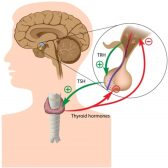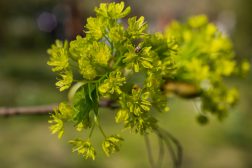Definition
noun, plural: chondrocytes
A cell occupying a lacuna in the extracellular matrix of the cartilage
Supplement
The cartilage is an animal connective tissue. It is less rigid than bones and less flexible than muscle tissues. It helps in holding bones together and can be found in joints, nose, bronchial tubes, intervertebral discs, and ear. It also helps in bone growth, especially in a growing young animal. It is made up of extracellular matrix that is formed by specialized cells, such as the chondroblasts. These cells produce and release (by exocytosis) various components of the extracellular matrix, such as proteoglycans, heparin sulphate, chondroitin sulphate, keratan sulphate, hyaluronic acid, collagen fibers, elastin, fibronectin, and laminin. However, the chondroblasts eventually become trapped in a space called lacuna in the extracellular matrix that they form. When they are lodged in the lacuna they become less active in forming the matrix and become more involved in facilitating the movement of nutrients and waste materials across the tissues. By then, they are called chondrocytes. Chondrocytes may still secrete (and degrade) components of the matrix, particularly to repair injuries of the cartilage. Since the chondrocytes are restricted in lacunae they cannot migrate to damaged tissues and therefore, compared to other tissue injuries, cartilage tissue repair may be rather slow or difficult.
Word origin: Greek chondros (cartilage) + kytos (cell)
Synonym(s):
See also:







